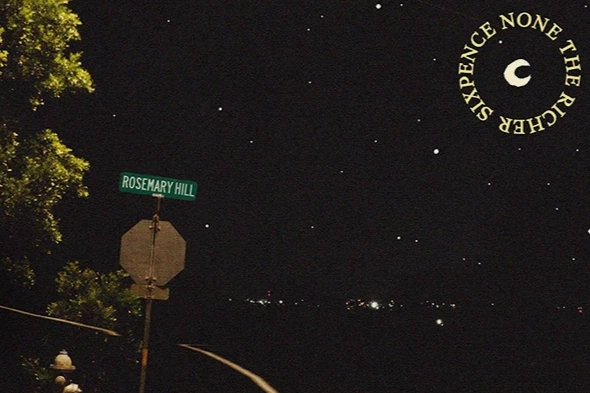Disclaimer: What follows are specific plot details and spoilers of “The Hunger Games: Catching Fire.” The review contains spoilers regarding the movie. Do not read this review if you have not watched the movie yet, and you wish to in the future.
When it comes to movie franchises, particularly those of the “three and done” variety, the odds are ever in the second film’s favor. These films are typically darker, larger in scale, and the filmmakers behind them jump at the attempt to craft a perfect setup for the trilogy’s conclusion. These are all aspects “The Hunger Games: Catching Fire” wears– sort of.
The cinematic adaptation of the final book in Suzanne Collins’s trilogy, “Mockingjay” has been split into two parts (as was the case with the Potter and Twilight finales), the first of which is slated for November 2014. So it’s no surprise that this second installment feels like filler; but it does the trick. Based on the novels by Suzanne Collins, the film serves as decently exciting transition from the adventurous adaptation of the first novel to a hopefully explosive finale.
Jennifer Lawrence and Josh Hutcherson return in their respective roles as Katniss Everdeen and Peeta Mellark, citizens of the 12th District of the future North America, Panem. Katniss and Peeta, co-winners of the 74th Annual Hunger Games the previous year, now find themselves worldwide celebrities, touring through the impoverished and oppressed Districts. But the Capitol and President Snow (Donald Sutherland), ruling as a heartless dictator, wish to use Katniss and Peeta to crush the revolution that is beginning to brew among the 12 Districts.
Much of this second film in the Hunger Games trilogy is spent on this tour, the pageantry that Panem holds in such high regard on seemingly constant display. Screenwriters Simon Beaufoy and Michael Arndt – writing here under the name Michael deBruyn – take their time getting to the meat of the film, the 75th Annual Hunger Games, where President Snow has a few menacing tricks up his sleeve to commemorate the milestone anniversary.
The Games do eventually commence, but only after the colorful characters and engaging world author Suzanne Collins created have been appropriately brought to light. There are a lot of unanswered questions going on inside “The Hunger Games: Catching Fire,” most of them pertaining to the rules of this future society, but Beaufoy and Arndt do a masterful job of giving us just the information we need without appearing to hand-hold us through this world. Panem feels more like something real in Catching Fire, at the same time more expansive and more grounded than what director Gary Ross delivered in the first film.
The directing duties were handed over to Francis Lawrence this time around, and he certainly captures the look Ross built up in the first film. From the gritty and gray Districts to the gaudy and glamorous Capitol, Lawrence takes the ball and charges headfirst into this vast future world. As with Beaufoy and Arndt and their adaptation of Collins’ work, Lawrence appears to be fascinated by the details. The sheen on Stanley Tucci’s character Caesar Flickerman’s teeth has never been this bright.
But the oppressive government and potential revolution are only the catalysts for the film’s main attraction, The Hunger Games: two volunteers from each District competing in brutal combat inside an arena until only one (or two given Katniss’ penchant for rule-bending) person survives. As with the first film, this is where Catching Fire begins to slip from captivating and awe-inspiring sci-fi bliss to charged but still clunky action.
Katniss and Peeta, both competing in the Games once again, now find themselves in a tropical region, allying and battling with a whole new cast of eccentric characters. The Games in Catching Fire never really find a strong foothold, and though their purpose to the story of the trilogy is solid and important, they come off as something of an afterthought. Those new allies and the depth they bring help, but the characters our protagonists go up against are little more than names and faces. Once again, the story is faced with that old problem of adapting a 400-page novel to a 150-page screenplay, and the film comes to an abrupt end, all the more abrupt if you haven’t read Collins’ novels.
Fortunately, the film works the revolution and government angle in the background the whole way through, setting up for a climactic, potentially two-part finale. Sutherland and newcomer Philip Seymour Hoffman, replacing Wes Bentley as the gamemaker, are exceptional in every scene they share. Hoffman’s character brings an added level of threat to the 75th Games, and his traps and tricks far more entertaining than watching people swing axes and fire arrows at their competition.
The actors filling the variety of roles are equally intriguing. Donald Sutherland playing President Snow and newcomer Philip Seymour Hoffman, replacing Wes Bentley as the Gamemaker, are exceptional in every scene they share. Hoffman’s character brings an added level of threat to the 75th Games, and his traps and tricks far more entertaining than watching people swing axes and fire arrows at their competition. Elizabeth Banks and Woody Harrelson return as the eccentric and colorful Effie Trinket and Haymitch Abernathy, respectively. Jeffrey Wright, Amanda Plummer, and Jena Malone are all superb as competitors in these new Games.
Liam Hemsworth comes back to build on the love triangle between him (Gale), Katniss, and Peeta. All franchises must now come complete with a love triangle, and the one at work in The Hunger Games series isn’t particularly as enticing as it might want to be. However, the conflict is scarcely brought to the foreground, and is thus not as big of an issue as it may have been otherwise.
Hutcherson is solid as Peeta, but there’s no denying Jennifer Lawrence is the true star of this series. Her portrayal of Katniss Everdeen brings every ounce of strength the character needs to come off as believably sympathetic. She doesn’t want to lead a revolution, but matters force her hand, and Lawrence nails both the reluctance and the energy the character displays as her government bears down on its people even harder.
The idea of revolution is nothing new to cinema (and novels), and “Catching Fire”– well, the “Hunger Games” series as a whole, really– has little fresh to offer when it comes to playing in that arena. However, the world building at work here and the constant stream of plot points keep the film from ever becoming stale. The film brushes over quite a bit, but what the screenwriters and director Francis Lawrence have given us is an energetic and solid second entry into what could potentially become a decent trilogy. However, it will have to be seen if the film adaptation of the often-criticized third novel, “Mockingjay,” is crafted with care. “The Hunger Games: Catching Fire” was made as such, and though that fire never rises to awesome heights, it absolutely whets its audience appetites.


![There are more than 20 open cardio machines at Crunch Fitness. I enjoyed the spacious environment at Crunch, a sentiment that was shared by sophomore Sanjana Daggubati. “[Going to] Crunch Fitness was the right decision because [it] feels more professional. Crunch’s workers are laid back, but not to the point where they don't care,” Daggubati said.](https://pwestpathfinder.com/wp-content/uploads/2025/09/IMG_5242-1-1200x900.jpg)

![Various empty Kit Kat wrappers crowd the desk, surrounded by scoring sheets. While production of Kit Kat flavors in the U.S. is limited, Nestlé, the owner of Kit Kat, manufactures hundreds of unique flavors in Japan, including the flavors ocean salt and passion fruit. “I thought there [were] some interesting flavors, and a lot of them were really unexpected,” senior Elle Levesque said.](https://pwestpathfinder.com/wp-content/uploads/2025/09/image-2.png)


![Pantone’s selection of the 2025 Color of the Year is revealed: Mocha Mousse. Ceramics teacher Ashley Drissell enjoys this year’s selection. “Maybe it’s the name but [Mocha Mousse] reminds me of chocolate and coffee. It makes me hungry. It’s very rich and decadent,” Drissell said.](https://pwestpathfinder.com/wp-content/uploads/2025/02/DSC_0015-1200x800.jpg)



![Focused on providing exceptional service, sophomore Darsh Mahapatra carefully cleans the door of a customer’s car. Mahapatra has always believed his customers deserve nothing less than the best. “[If] they’re trusting us with their car and our service, then I am convinced that they deserve our 100 percent effort and beyond,” Mahapatra said.](https://pwestpathfinder.com/wp-content/uploads/2025/10/DSC_0018-1200x800.jpg)
![Sophomore Aleix Pi de Cabanyes Navarro (left) finishes up a soccer game while junior Ava Muench (right) warms up for cross country practice. The two came to Parkway West High School as exchange students for the 2025-2026 school year. “The goal for the [exchange] program is to provide opportunities for both Parkway students and our international exchange students to learn about other cultures, build connections and become confident, capable, curious and caring — Parkway’s Four C’s — in the process,” Exchange Program Lead Lauren Farrelly said.](https://pwestpathfinder.com/wp-content/uploads/2025/10/Feature-Photo-1200x800.png)
![Leaning on the podium, superintendent Melissa Schneider speaks to Parkway journalism students during a press conference. Schneider joined Parkway in July after working in the Thompson School District in Colorado. “My plan [to bond with students] is to get things on my calendar as much as possible. For example, being in [classes] is very special to me. I am trying to be opportunistic [meeting] kids [and] being in [the school] buildings. I have all the sports schedules and the fine arts schedules on my calendar, so that when I'm available, I can get to them,” Schneider said.](https://pwestpathfinder.com/wp-content/uploads/2025/09/IMG_5425-1200x943.jpeg)
![Gazing across the stage, sophomore Alexis Monteleone performs in the school theater. The Monteleone family’s band “Monte and the Machine” has been releasing music since 2012, but Alexis started her own solo career in 2024 with the release of her first single, Crying Skies. “My whole family is very musical, [and I especially] love writing [songs with them],” Monteleone said.](https://pwestpathfinder.com/wp-content/uploads/2025/09/DSC7463-1200x798.jpg)

![Leaping through the air, senior Tyler Watts celebrates his first goal of the season, which put the Longhorns up 1-0 against the Lafayette Lancers. Watts decided to play soccer for West for his last year of high school and secured a spot on the varsity roster. “[Playing soccer for West] is something I had always dreamed of, but hadn’t really had a good opportunity to do until now. It’s [really] fun being out [on the field], and I’m glad I decided to join the team. It’s just all about having fun with the boys and enjoying what time we have left together,” Watts said.](https://pwestpathfinder.com/wp-content/uploads/2025/09/DSC_1951-1200x855.jpg)

![Junior Fiona Dye lifts weights in Strength and Conditioning. Now that the Trump administration has instituted policies such as AI deregulation, tariffs and university funding freezes, women may have to work twice as hard to get half as far. "[Trump] wants America to be more divided; he wants to inspire hatred in people,” feminist club member and junior Clara Lazarini said.](https://pwestpathfinder.com/wp-content/uploads/2025/05/Flag.png)
![As the Trump administration cracks down on immigration, it scapegoats many immigrants for the United States’ plights, precipitating a possible genocide. Sophomore Annabella Whiteley moved from the United Kingdom when she was eight. “It’s pretty scary because I’m on a visa. When my visa expires next year, I’m not sure what’s going to happen, especially with [immigration] policies up in the air, so it is a concern for my family,” Whiteley said.](https://pwestpathfinder.com/wp-content/uploads/2025/05/DSC_0077-7copy.jpg)
![Shifting global trade, President Donald Trump’s tariffs are raising concerns about economic stability for the U.S. and other countries alike. “[The tariffs are] going to pose a distinct challenge to the U.S. economy and a challenge to the global economy on the whole because it's going to greatly upset who trades with who and where resources and products are going to come from,” social studies teacher Melvin Trotier said.](https://pwestpathfinder.com/wp-content/uploads/2025/05/MDB_3456-1200x800.jpg)